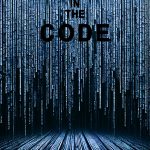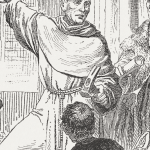Land of the Bible: Mount Zion and more
This series deals with the Old City of Jerusalem, Mount Zion, and the Garden Tomb. It begins with a panoramic view from the rooftops of its shops and houses and progressing to the Church of the Holy Sepulcher, the Mosque of Omar, the Greek Patriarchate, and the Citadel Museum of Jerusalem’s History concluding with a topographical map of Jerusalem. This video series serves as an orientation to Jerusalem and its multifaceted Jewish, Muslim, and Christian character.
Ep. 1 The Burnt House
The Burnt House is the site of a house in the present Jewish Quarter that was destroyed in 70 AD. This video briefly provides an orientation to the events of the war from 66-70 AD and how the war affected the history of the early Jewish Christians.
Up the steps at the entrance to this site is the “Jewish Quarter Café” where an excellent dairy lunch can be enjoyed, along with a marvelous view of the Temple Mount.
Up the steps at the entrance to this site is the “Jewish Quarter Café” where an excellent dairy lunch can be enjoyed, along with a marvelous view of the Temple Mount.
Ep. 2 Mount Zion
The western hill of Jerusalem was given the name “Mt Zion” in Byzantine times although the original “Zion” was the eastern hill (Ps 48:2). Traditional sites of the Last Supper and tomb of David are here, located outside Zion Gate.
It was the actual site of a large church, probably the first one actually built in Jerusalem, called the Church of Holy Zion. James the brother of Jesus was honored here as the first “pastor.” This area was also the site of the Pentecostal effusion (Acts 2).
At Mt Zion, The Church of the Dormition commemorates the Roman Catholic belief that Mary fell asleep and was bodily assumed into heaven.
It was the actual site of a large church, probably the first one actually built in Jerusalem, called the Church of Holy Zion. James the brother of Jesus was honored here as the first “pastor.” This area was also the site of the Pentecostal effusion (Acts 2).
At Mt Zion, The Church of the Dormition commemorates the Roman Catholic belief that Mary fell asleep and was bodily assumed into heaven.
Ep. 3 Traditional Site of The Last Supper
Called the “Cenacle” this site commemorates that place of the Last Supper although the style of the room is Crusader. The room has gone back and forth between Moslem and Christina hands, hence the mihrab, or prayer niche, oriented toward Mecca. Since 1948 the room has been considered a house of prayer for all faiths. Pentecostals love the site because they commemorate here the vents of Pentecost (Acts 2).
Ep. 4 Chamber of the Holocaust
Between 1945 and the opening of Yad Vashem in 1953, the chamber commemorates the Holocaust and contains some physical evidence of what the Nazis did to the Jews of Europe.
Ep. 5 Oskar Schindler's Grave
The Roman Catholic cemetery on Mt Zion is where this Nazi industrialist Oskar Schindler, who rescued over 1,000 Jews, asked to be buried.
Ep. 6 Zion Gate
Each of the gates has both a Hebrew and an Arabic name. Zion Gate is called “Gate of the Prophet David” by the Arabs. The gate has much damage from bullet holes because it was the center of fierce fighting in the 1948 war. This was when Jewish forces were trying to rescue the fighters in the Jewish Quarter, which was eventually lost and evacuated of its Jewish inhabitants.
Ep. 7 The Temple Institute
From a small balcony overlooking the Western Wall and behind the wall of a Crusader Church from the 12th century, we review the work of the Temple Institute, dedicated to the study of the Temple and its worship to prepare for the “Third Temple.” The gold menorah seen behind Dr. Varner is one of the pieces of “furniture” that has been made. Others that are similar can be found in the Institute in the Jewish Quarter. Jewish opinions differ about whether they should wait for the Messiah to build their temple or if building the temple will hasten Messiah’s coming.
Ep. 8 The Western Wall
Part of the retaining wall Herod built around the Temple Mount was used to flatten the top of the hill for its expansion. The lower 6-7 courses of ashlars are Herodian and the courses above are medieval and Moslem. It is called the “Wailing Wall” by non-Jews who through the years observed Jews “wailing” there over the destruction of the Temple.
It's currently a Jewish place of prayer divided into men’s and women’s areas, as in a synagogue. The lintel of “Barclay’s Gate” – a filled in gate into the Temple – can be seen in the right part of the women’s section. The arch to the left of the men’s section (Wilson’s Arch) actually supported a bridge from the Western hill into the Temple. The “Western Walls” tunnel is the continuation of this section under the arch.
It's currently a Jewish place of prayer divided into men’s and women’s areas, as in a synagogue. The lintel of “Barclay’s Gate” – a filled in gate into the Temple – can be seen in the right part of the women’s section. The arch to the left of the men’s section (Wilson’s Arch) actually supported a bridge from the Western hill into the Temple. The “Western Walls” tunnel is the continuation of this section under the arch.
Ep. 9 The Via Dolorosa
This path through the Moslem and Christian Quarters dates from the late Middle Ages and is based largely on tradition. The Ecce Homo (“behold the man” John 19:5) Arch actually was part of a monumental triple arch entrance into the city reconstructed by Emperor Hadrian after the Bar Cochba War 132-135 AD. The left arch of the three can also be seen inside the Ecce Homo Chapel.
Ep. 10 The Tower of Antonia
The Antonia Fortress was built northwest of the Temple mount and was the site of a Roman garrison in the first century. Here Paul was brought after being rescued from a Jewish mob in Acts 21:27-36. On its staircase he addressed his Jewish hearers in Acts 21:37-22:21. From here he was taken by night to Caesarea when the plot to kill him was uncovered (Acts 23:12-31).
The fortress was destroyed down to the bedrock from which it was cut in the northwestern part of Mt Moriah (this can be seen from the Temple Mount). The window allows a view onto the Temple Mount and the Dome of the Rock.
The fortress was destroyed down to the bedrock from which it was cut in the northwestern part of Mt Moriah (this can be seen from the Temple Mount). The window allows a view onto the Temple Mount and the Dome of the Rock.
Ep. 11 Pools of Bethesda
This is the actual site of the miracle recorded in John 5:1. However, the site is difficult to picture in its original condition due to the successive destructions and the excavations. The mention of the angel stirring the water in 5:3-4 is textually suspect and probably not part of the original of John’s Gospel.
Ep. 12 Church of St. Anne
The Church of St. Anne is traditionally the place of the birth of the mother of Mary. The acoustics of this Crusader Church are quite amazing. This church was preserved because it was used as a Moslem school before being returned to the White Fathers.
Ep. 13 The Garden Tomb
This video is the guided tour of the site from one of the British guides of the Garden Tomb Association.
Ep. 14 Garden Tomb Communion
This video joins Dr. Varner for a worship time centered on partaking of the bread and the cup in the tranquil location of what some believe to be the place where Jesus died and rose again. Even if history and archaeology do not support this claim, there is no quieter place in the area to worship the Lord than this special place north of the Damascus gate.



